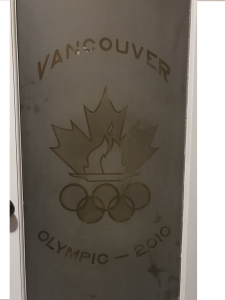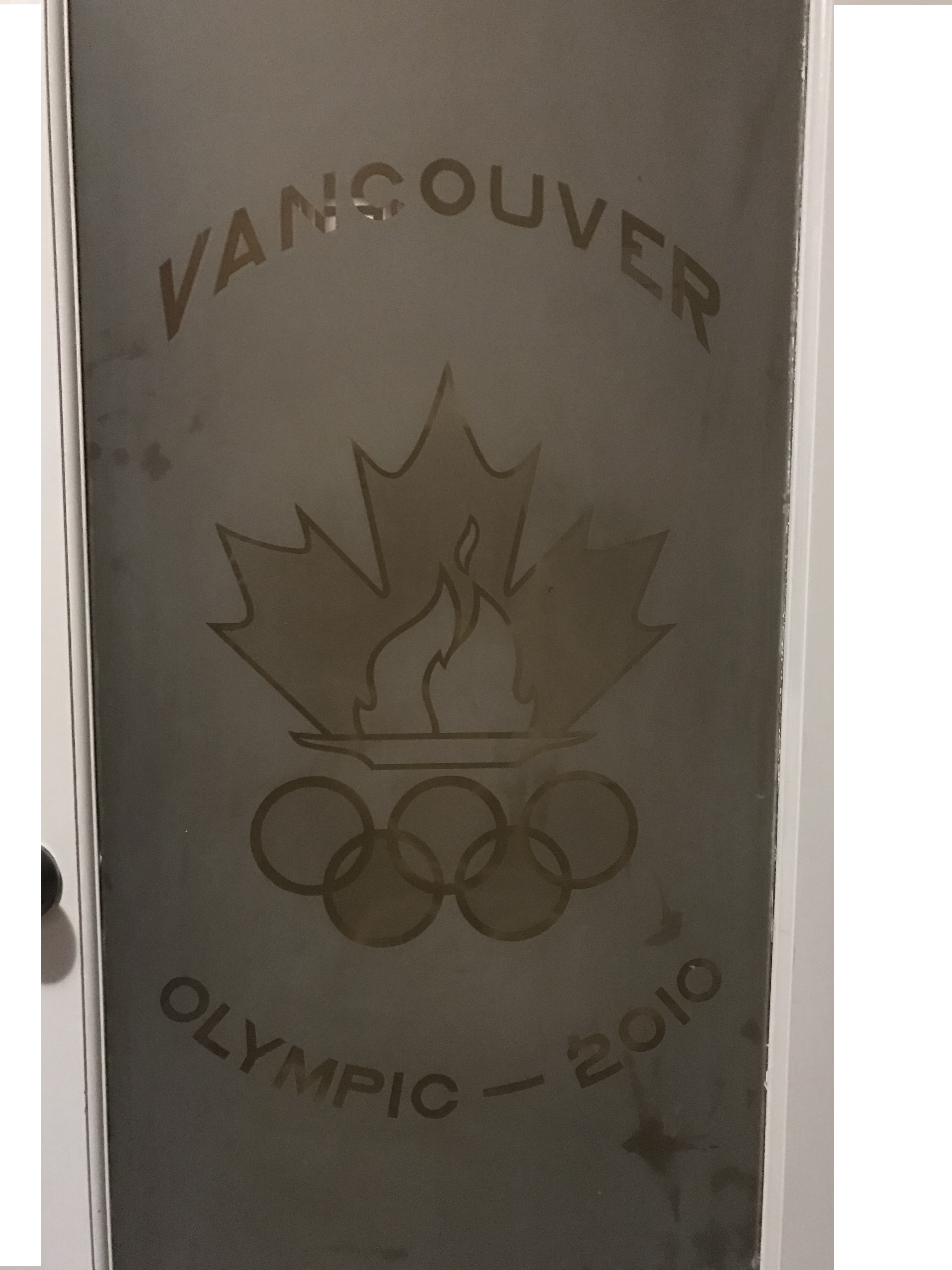The Vancouver 2010 Winter Olympics

This is a picture of a door that connects my family room to the kitchen, it was put in by my father during the Olympics, an event that attracted a lot of tourists into the beautiful city of Vancouver. The Vancouver Olympics used many First Nations’ symbols and mythical creatures for mascots. Though my family actively participated in the festivities of the 2010 winter Olympics, we were not aware of the past and ongoing violence against the First Nations. Though the 2010 winter Olympics gave many aboriginal groups the opportunity to showcase their art and culture but the aboriginal culture was still commodified through the numerous souvenirs in every gift shop around the city. Many of the group’s problems were put under the carpet for the time being of the Olympics.
The 2010 winter Olympics took place on unceded territory, like most of Vancouver, meaning the land was never bought or traded from the First Nations people but rather taken. The Vancouver Olympics appeared “to be rooted in multiculturalism” (Robyn,2009). Multiculturalism is described as an “ethos which values not only the preservation and perpetuation of various cultures but also cross-cultural understanding and harmonious cultural co-existence” (Garcea 1, 2009). This only strengthened the idea that exists in the mind of many people around the world, that Canadians take pride in multiculturalism, which in many cases is true when compared to other countries but has not always been the case. The Vancouver Olympics gave “the four Host First nations” a group that represented the four bands that are the original citizens of the Vancouver area (CBC, 2010), an opportunity to showcase their culture in front of the whole world and was a great platform to teach people more about the culture and festivities. When interviewed, Maddy McCallum reported that the Winter Olympics gave her the “opportunity to showcase her culture to the world… it’s also helping erase some of the painful scars in her people’s history” (CBC, 2010). Though Maddy and many other people got the opportunity to showcase their culture, many people left Vancouver without the knowledge of Canada’s history against the people of the land, rather many people left with the strengthened belief about Canada being the “polite” nation it is commonly known for. The exploitation of the land and the people who initially possessed it still remains a subject that is hidden behind the Canadian flag for many people around the world.
Many Aboriginal and Inuit symbols and products were used to represent the 2010 Vancouver Olympics and almost all gift shops were filled with First Nations’ products and not all were locally made by First Nations people, taking away from the true values of the totem poles and inukshuks and were turned into commodities for the tourists to enjoy. In research conducted by Solen Roth, a UBC anthropologist, she stated that “approximately 80 percent all Aboriginal-themed merchandise sold in Vancouver’s tourism sites are made by non-Aboriginal companies” (Nicholas, 2013). Though the Olympics gave the First nations a platform to showcase their culture to the world, the native heritage was still exploited and commodified. The true values of aboriginal art and culture were belittled and made cheaper by being made overseas, to be abundantly put into gift shops.
The 2010 winter Olympics marketed the lives of Native people in a way that hid the real problems many First Nation communities are facing, rather the marketers showcased them as a group that has the rights and freedoms they deserve and hid the damage done to these communities through the Canadian government, residential schools being a prime example of that. Residential schools left a large number of Aboriginal people with scars, poverty, and ongoing drug and alcohol issues. These issues are clearly visible on the streets of Vancouver but all that was forgotten in the 2010 winter Olympics with the help of good marketing and gentrification.
Citation
Bourgeois, R. (2009). Deceptive inclusion: The 2010 Vancouver Olympics and violence against first nations people. Canadian Woman Studies, 27(2), 39-44. Retrieved from http://ezproxy.library.ubc.ca/login?url=http://search.proquest.com/docview/217442225?accountid=14656
News, C. (2010, February 14). Aboriginal involvement in Games makes history. Retrieved March 26, 2017, from http://www.cbc.ca/news/canada/british-columbia/aboriginal-involvement-in-games-makes-history-1.945693
Symposium explores commodification of Aboriginal culture May 01, 2013. (2013, May 01). Retrieved March 25, 2017, from http://www.sfu.ca/university-communications/media-releases/2013/symposium-explores-commodification-of-aboriginal-culture.html
